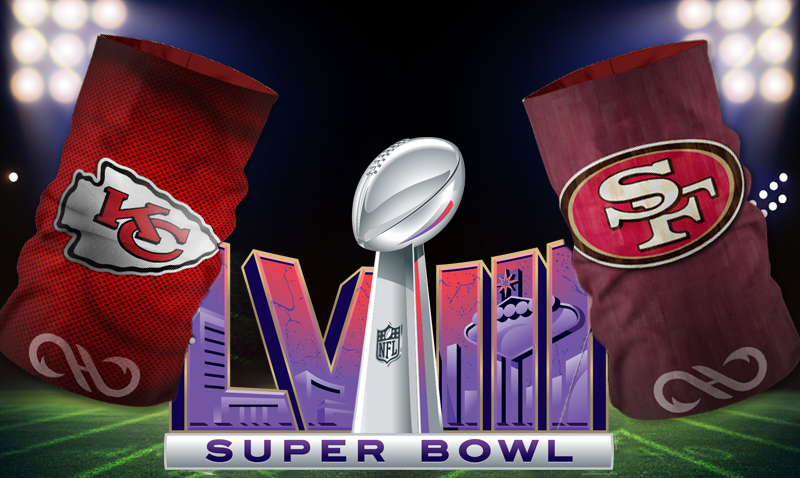Super Bowl LVIII Top 5 Foods & Tailgating

Super Bowl LVIII takes place at Allegiant Stadium in Las Vegas on February 11, 2024, featuring an electrifying showdown between the San Francisco 49ers and the Kansas City Chiefs. This game will keep fans on the edge of their seats, as the 49ers and the Chiefs battle it out at Super Bowl LVIII. While these two teams are battling most of the world will be eating as they watch the game.
As for the most popular Super Bowl foods enjoyed by fans across the nation, here are five perennial favorites:
Buffalo Wings: Spicy, tangy, and oh-so-addictive, buffalo wings are a staple at Super Bowl parties. Served with celery sticks and blue cheese or ranch dressing, they are a crowd-pleaser.
Pizza: Whether it's delivery, frozen, or homemade, pizza is a classic game day treat. With a variety of toppings to choose from, it's sure to satisfy everyone's cravings.
Chili: Hearty and comforting, chili is a beloved dish during Super Bowl gatherings. Whether it's beef, chicken, or vegetarian, served with cheese, sour cream, and chopped onions, it's a warm and satisfying option for a chilly game day.
Nachos: Loaded with cheese, jalapenos, guacamole, sour cream, and salsa, nachos are a popular choice for sharing among friends while watching the game. They're easy to customize and always a hit.
Sliders: Miniature burgers packed with flavor, sliders are a hit at Super Bowl parties. Whether it's classic beef sliders, pulled pork sliders, or veggie sliders, they're perfect for snacking on throughout the game.
Super Bowl parties and the food associated with them have become increasingly popular over the years mainly due to tailgating. Tailgating at football games has a rich history that dates back over a century, evolving from a simple pre-game tradition to a vibrant cultural phenomenon. Here's a brief overview of its history:
Early Beginnings: The origins of tailgating can be traced back to the late 19th century, when fans of college football games would gather in the parking lots adjacent to stadiums to enjoy pre-game picnics. These gatherings typically involved bringing food and drinks from home, setting up makeshift grills, and socializing with fellow fans before heading into the stadium to watch the game.
Rise in Popularity: Tailgating gained popularity throughout the early to mid-20th century, particularly in the United States, as football games became increasingly popular and stadiums began to offer designated parking areas for fans. Tailgating became an integral part of the game day experience, with fans arriving hours before kickoff to set up elaborate spreads and celebrate with friends and family.
Cultural Phenomenon: By the latter half of the 20th century, tailgating had evolved into a cultural phenomenon, extending beyond football games to encompass a wide range of sporting events, concerts, and other outdoor gatherings. Tailgating became synonymous with camaraderie, tradition, and celebration, with fans taking pride in their tailgating setups and culinary creations.
Commercialization and Innovation: As tailgating grew in popularity, it also became increasingly commercialized, with companies capitalizing on the trend by offering specialized tailgating gear, equipment, and food products. This led to innovations in tailgating technology, including portable grills, coolers, and tents designed specifically for outdoor gatherings.
Modern-Day Tailgating: Today, tailgating remains an integral part of the football game day experience, with fans across the country continuing to gather in stadium parking lots to grill, eat, drink, and socialize before cheering on their favorite teams. Tailgating has also expanded beyond traditional parking lot gatherings, with some stadiums offering designated tailgating areas and organized tailgating events featuring live music, games, and activities.
Overall, Super Bowl parties and the food served at them have become popular over the years due to a combination of factors, including widespread television broadcast, advertising, community and socializing, the food and beverage industry, and media coverage. These elements have contributed to the establishment of Super Bowl parties as a beloved tradition in American culture.




